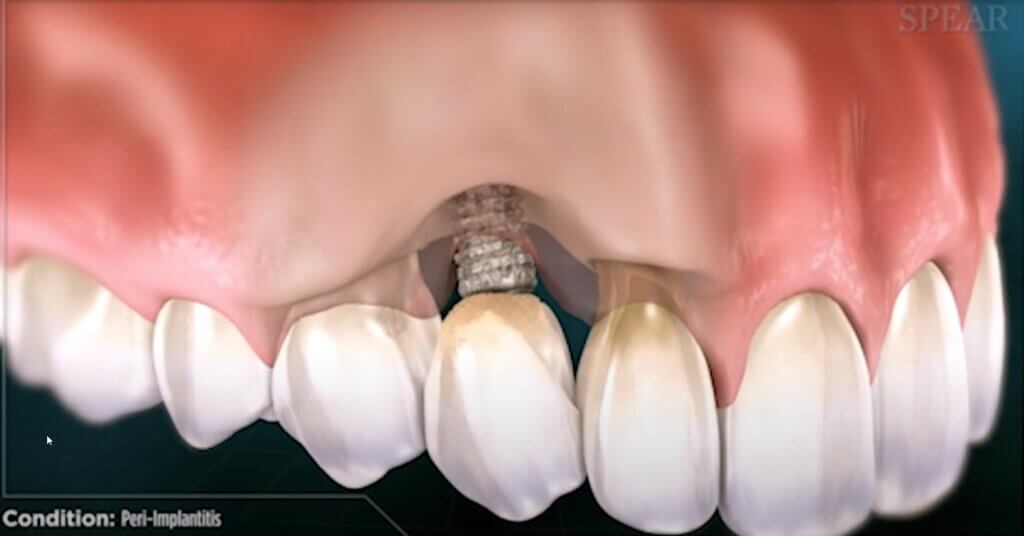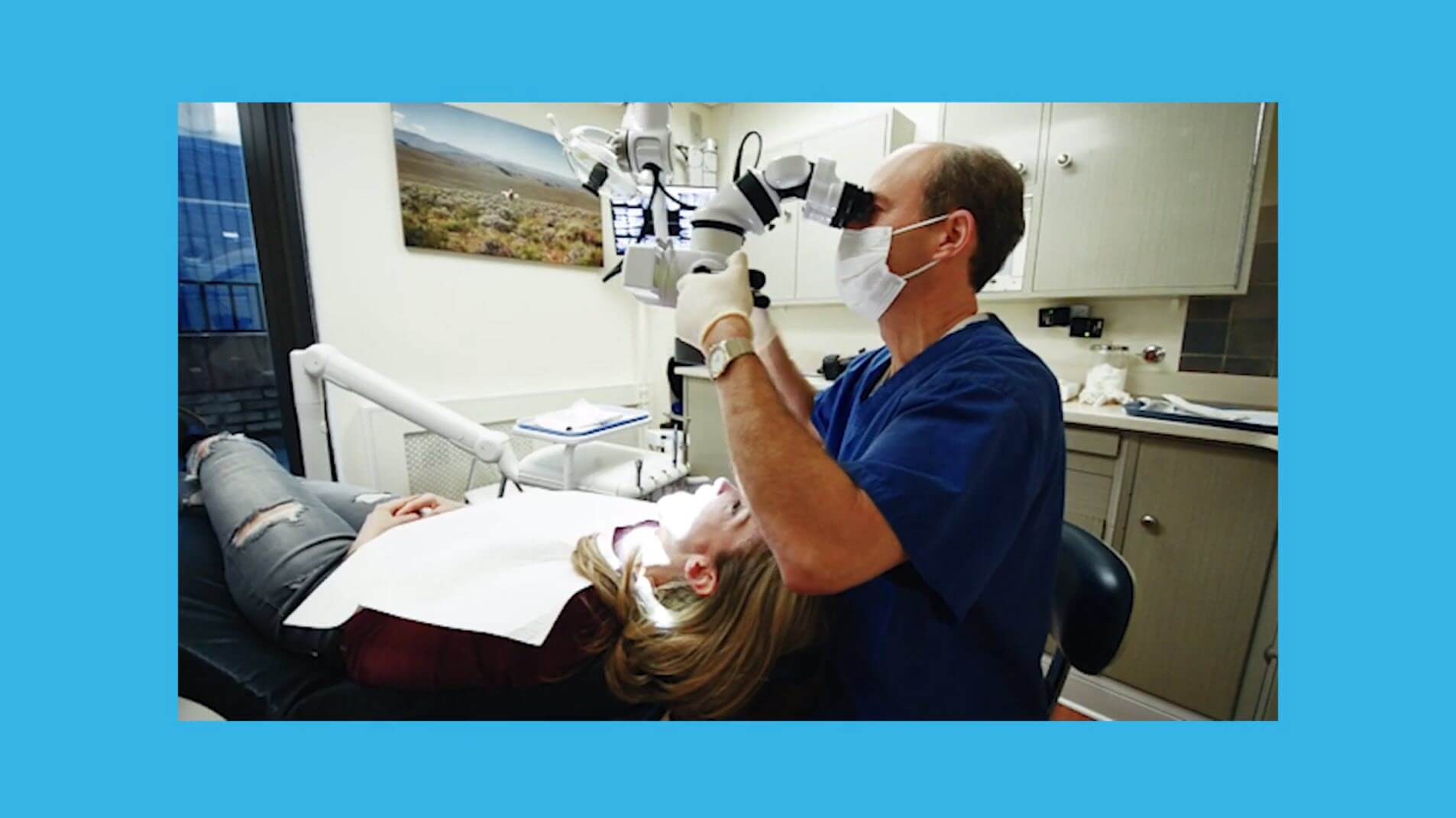Dental implants have become quite popular in the last several years, so much so that you can probably get implants at your neighborhood family dental center. In fact, the American Academy of Implant Dentistry estimated that in 2020 about 3 million people in the U.S. replace their missing teeth with dental implants each year. However, the quality of dental implants can vary greatly depending on the techniques used by your implant specialist and his or her experience. Consequently, if you are considering dental implants you should be aware of potential issues and how to best avoid them.
What are Dental Implants?
Dental implants are the best option for replacing missing teeth. You can replace one or more teeth or anchor an entire mouthful of dental implants while using only 4 titanium rods per upper or lower bridge (known as All on 4 dental implants).
The implants are made of a biocompatible material such as titanium or zirconia that are inserted into your jawbone and gums to function as your tooth’s natural root structure. Dental implants are then covered with natural-looking tooth crowns. They are a permanent solution, one that is not removable and will not slide or fall out when you talk, smile, or eat certain foods.
Potential Dental Implant Issues and How to Avoid Them
The majority of dental implant surgeries may be successful, but Dr. Kissel is visited on a weekly basis by new patients who are experiencing serious issues that require complicated and costly removal/replacement procedures. To prevent dental implant problems, you should be aware that not all dental implant providers are equal. Consequently, you need to investigate the type of implants, the procedures, the qualifications, and the experience of the implant specialist who will be placing your dental implants.
Peri-Implant Diseases
Peri-implantitis (PI) is a common complication of dental implants, which is defined as “a destructive inflammatory process affecting osseo-integrated implants in function, leading to peri-implant pocket formation and loss of supporting bone”.
Basically, PI affects the soft and hard gum tissues around dental implants. Bacteria that accumulate on the base of the implant, below the gum line, can irritate the gum tissue, causing it to become inflamed. It can damage the gum tissue and, if left untreated, it can deteriorate the bone structure below your dental implant.

The prevalence of PI over an average follow-up of 2 years can be as high as 1/5 of all implants. There are several factors associated with PI such as ill-fitting / ill-designed implants, lack of attached periodontal tissue around your implants, poor dental hygiene, periodontal disease, or heavy smoking and alcohol consumption.
It’s important that your dental implant specialist uses high-quality dental implants with years of proven clinical success in order to reduce the risk of PI. As a periodontist who has placed thousands of implants in New York City residents’ mouths over 25 years, Dr. Kissel is committed to excellence. He only uses the most researched and tested implant systems available on the market from Straumann and Nobel Biocare. Using such advanced and studied implants for your surgery helps give you an edge at achieving implant success.
Avoiding Dental Implant Issues with Expert and Precise Planning
Dr. Kissel’s approach to dental implant sets him apart from other implant specialists not only because of his microsurgical philosophy to dental surgery but also because of the steps he takes before the dental implant procedure even begins.
3-D Planning of Your Virtual Mouth
According to Dr. Kissel, the best way to diagnose an implant site is with 3-D planning, which utilizes an optical scan of the teeth, gums, and opposing tooth arch. Most dental implant specialists take a bone scan and then proceed with implant placement. However, because 3-D planning is performed using sophisticated software that allows for a 360-degree view of all structures, critical anatomy (e.g. nerves and sinus), creating your virtual mouth on a computer where every minute detail of your dental implant procedure is planned and executed before you open your mouth. Then using a 3-D printer, Dr. Kissel creates a guide or a retainer to be used to place the implant in the precise position mapped out using the virtual model of your mouth. This results in a much safer, precise dental implant procedure leading to a better long-term result with fewer complications over time.

Presence of Bone and Gum Tissue
Furthermore, Dr. Kissel ensures that the proper bone shape and type of gum tissue are present around your implant before the actual implant procedure takes place. A periodontist, like Dr. Kissel, is the specialist who can diagnose bone and gum tissues and if warranted, regenerate both hard and soft tissues to maximize the success of your dental implant. In order to regenerate the needed tissue, Dr. Kissel uses microsurgery since it is the most minimally invasive technique to assist in implant placement and bone/soft tissue augmentation.
Increase your Dental Implant Success with Microsurgery
Dr. Kissel uses guided microsurgery surgery for even single implants since research shows it leads to more precise implant placement. If dental implants are ill-placed, there is a risk that it can lead to peri-implantitis. Microsurgery makes your surgery and recovery time period easier and faster. This is because dental microsurgery is one of the most precise and effective techniques available. Using smaller and more accurate instruments, you will experience less trauma to the surgical site than using traditional techniques. Dr. Kissel is able to make smaller incisions without stitches compared to the larger, more painful incisions of traditional dental implant surgery. Microsurgery also significantly reduces the risk of complications since the better one can see, the more knowledge one acquires resulting in careful manipulation of tissues and critical anatomy.
Because Dr. Kissel uses microsurgery techniques, he can operate without causing major incisions and trauma to sensitive tissue, muscles, and nerves. Additionally, because he only makes small incisions with micro-instruments, your surrounding gum tissue will appear normal after surgery.
Consult with Dr. Kissel
Reclaiming your beautiful smile and the full functionality of your teeth starts by booking your dental implant consultation with Dr. Kissel. During your consultation, he will perform a complete oral examination and explain the dental implant procedure to you, including tooth removal (if needed) and dental implant placement using microsurgery techniques. If you’re ready to replace your smile with natural-looking, functional dental implants, then call Dr. Kissel’s office in the New York City area for a consultation at (212) 702-9088 or book online.
